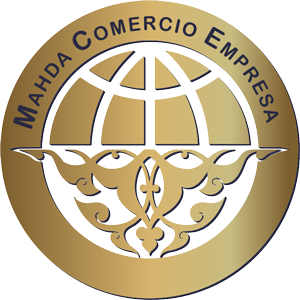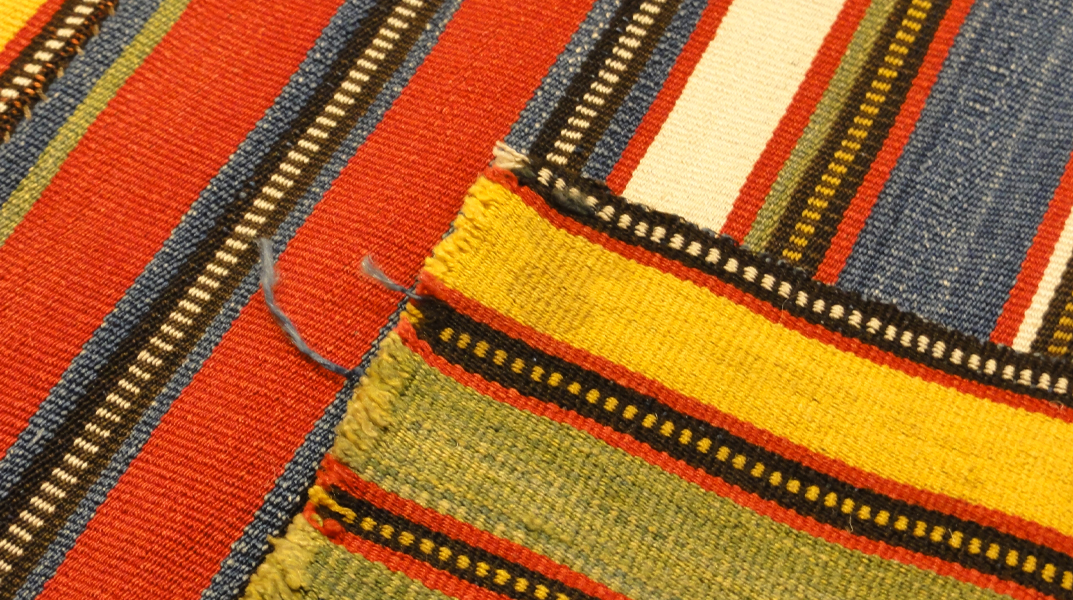- Your shopping cart is empty!
To better and more accurately understand the difference between kilim and jajim, it is better to have definition of both, at first. Then we name the main differences between Kilim and Jajim. It goes without saying that the variety of these products is very wide and there are few people who are fully acquainted with all types of carpets and kilims.
What is Jajim?
Jajim is one of the handicrafts that is woven, has no lint and is relatively thick and can be used on two sides. Jajim is made of wool or cotton or a combination of both. Jajim is woven in areas of the west and northwest as a bedding, bed twister and sometimes used on the table.
Qashqai Jajim
Of course, Jajim has different names in different regions. For example, in Ilam, it is known as Joul. In the same way, the machine with which the jul is weaved, is called Joulai or Joulahi and the person who weaves Joul is called Joulahe. Although a device is used in Jajim weaving, but it relies entirely on the hand and is a completely manual art.
Jajim is usually
woven in four boards with high length and low width, then the boards are sewn
together.
Today, Jajim is also produced by machine, but it will definitely not have the intimate and traditional feel of handmade Jajim.
The devices with which Jajim is woven include Jajim weaving machine, Joulai loom, Guilan loom, nail, Defeh, Tag, Shamshireh, Sardar, Cul, Gort, bobbin and Maku.
Jajim weaving tools – Maku
The patterns
woven in Jajim are colorful and striped, stepped, congressional and checkered.
Chichaklameh Jajim was the most famous with a combination of colors and rhombus
patterns in striped colors in village and the city.
Chichaklameh Jajim
What is a kilim?
The kilim has a smooth and uniform surface without lint, which is composed of warp and weft. In fact, kilim is a type of carpet without lint and is in the category of carpets. The thinner and softer warp and weft, the greater the quality of the kilim. For this reason, fleece under the throat and armpits of sheep is used for kilim weaving.
Why fleece is used to produce and weave kilim? Because fleece has high flexibility and durability, in addition to paintability properties.
There are four types of kilim weaving machines: plain weaving, machine weaving, jajim weaving (it has two purposes and it is used for weaving kilim and jajim) and needle kilim (somak).
The oldest piece of kilim belongs to 6000 BC, which was found on the island of Anatolia, but the oldest Iranian kilim belongs to 3000 thousand BC, which was found in western Iran.
Types of kilims
Simple, two-surface or flat (traditional) kilim: It is thinner than other types of kilims. The patterns on both sides of the kilim are the same and both sides can be used. Qashqai, Saneh and Bijar kilims of Kurdistan and Musnad and simple kilims of Ardabil, Semnan and Zanjan are among this category of kilims.
One-sided kilim or Somak: The most delicate Somak kilim belongs to the Caucasus. They are thicker and were first woven by nomads.
One-sided but non-somak kilim: These kilims are woven with simple weaving method, Somak weave and even full knots.
Differences between jajim and kilim
• Jajim is woven thinner and softer than kilim and has a thickness between
kilim and fabric.
• The patterns on Jajim are limited because they are created by warp and
weft and are mostly vertical or horizontal, but the kilim has no limit in
design and pattern.
• Warp is hidden in the kilim and cannot be seen, but since Jajim warp
winding is colored, it doubles the beauty of Jajim's design and role.
• The number of jajim warps is more, but the kilim has more delicate warps.
• Jajim consists of interwoven pieces that are connected in a long piece,
but the kilim is woven in one piece.
• In Jajim weaving, the loom is placed horizontally on the ground. But in the kilim, it is either vertical or lying down.
Tips on jajim and kilim
• Synthetic colors are used in the texture of
some kilims. To find out, rub a wet cloth over the kilim, if the cloth becomes
colored, it means that artificial colors have been used.
• Before purchase, it is better to specify the space where you want to spread the kilim in order to know whether kilim is more suitable or Jajim.
• If dust and dirt remain under and inside the roots of the carpet for a long time, it will make the carpet brittle. Despite the vacuum cleaner, this problem is rare today.
• If you want to keep your kilim, jajim, gabbeh, zillu, etc. in the closet or storage room for a while, be sure to put naphthalene or tobacco next to it to prevent moth-eating.
• To wash delicate and artistic kilims, it is better to use carpet shampoo
and wash it by hand. Do not use laundry detergent. You can also use detergents
for colored clothes. Most importantly, the water temprature should be below 30
degrees.
• Root care is very important because uprooted roots reduce the value and beauty of your kilim and jajim. Therefore, be sure to clean the roots of your kilim and jajim well when washing.
• If you are looking for a very durable kilim, buy a kilim whose warp is
made of fleece or silkbecause it rots later.
• If you want to spread your kilim on ceramic, buy a Somak kilim that is full of knots behind the work and prevents the kilim from slipping. Kilims with embroidered leather edges are also suitable for this purpose.
• If you have sensitive skin, avoid buying
kilims and jajim with synthetic fibers. Natural fibers not only do not cause
skin allergies and cracked feet, but also to some extent prevent rheumatic pain
and simple foot pain.
• The prices of kilim and jajim depend on
various factors; The type of kilim and jajim, the type of lint, warp and weft, tag,
weaving company, etc. are among the factors influencing the determination of
the prices of kilim and jajim. The price of hand-woven kilims in the Iranian
market in general is between a to 5 million Tomans and machine-made kilims from
100 thousand Tomans to 1 million Tomans.
Leave a Reply
Your email address cannot be published. Required fields are marked*




Comments: 0